Circus as Physical Education Program
Earn credit towards graduation!
Standards Based Curriculum
Rationale
Health related skills can be learned at any age. Ongoing practice makes improvement and habit. It is important to provide holistic physical education that emphasizes access and success for all, while illuminating personal and communal benefits. This type of programming will support people in continuing to be active throughout their lifetime. It will prepare long term athletes who enjoy competitive sports and those who may not be interested in achieving elite competition levels.
Circus arts can be valuable non-competitive activities with which students can learn entrepreneurial, civic, personal, and interpersonal skills. These activities cultivate physio-spatial, intellectual, and emotional awareness and provide psychological benefits of self-worth, self confidence and self motivation. By participating in such activities, students develop abilities in self expression, collaboration, and music, while building strong bones, muscles and cardiovascular health. The mission of this curriculum is to provide an alternative holistic program that students may participate in to help them meet graduation requirements for physical education. I will provide an organized and advised curriculum with detailed weekly lesson plans. Ongoing teacher assessment and documentation of progress will be completed. Peer and self assessments will also be utilized periodically. In addition, students will have opportunities to express and share their work through performance at community events which will enhance the connectedness between student and community and act as cumulative assessment.
Program
This circus curriculum includes technical and creative movement, both on the floor and in the air. Students will strengthen body and mind in yoga, dance and tumbling exercises. Students will collaborate with others and realize their individual strengths through circus production and partner acrobatics.¹ Students will further increase kinesthetic intelligence through aerial technique using the apparatuses sling/hammock, silks, lyra, and dancer trapeze. Students will develop coordination through juggling and other flow art prop manipulation. Students will receive verbal and visual feedback that recognizes their accomplishments and encourages them to continue to grow. My mission is to provide safe, fun, positive, and rewarding circus experiences that teach the whole child; physical, intellectual, psychological, and social.
This curriculum has been written with the International Youth and Social Circus Network c for physical education in mind. You will find the standards for grades 4th through 8th interwoven with lessons and tasks. Also included are assessments and tools for tracking and documenting progress.
Teaching philosophy
A good teacher will illuminate one’s ability to do for oneself. With positivity and reassurance, guidance through problem solving is most valuable to a learner. As the learner’s perspective is opened up to layers of engagement with any content, a good teacher will be present to offer ideas on how to approach new problems. By focusing on efforts in lieu of results, the learner is fueled to persevere.
Curriculum value orientation
Learning processes will include problem solving, peer and self-assessment, technology, communication, conceptual abilities and application of new skills and knowledge. This curriculum aims to develop independent and cooperative learners who respect the society in which they live.
Defined Competencies and Terms
Circus Educators Cultural Humility
- Resource: Caravan Circus Network
